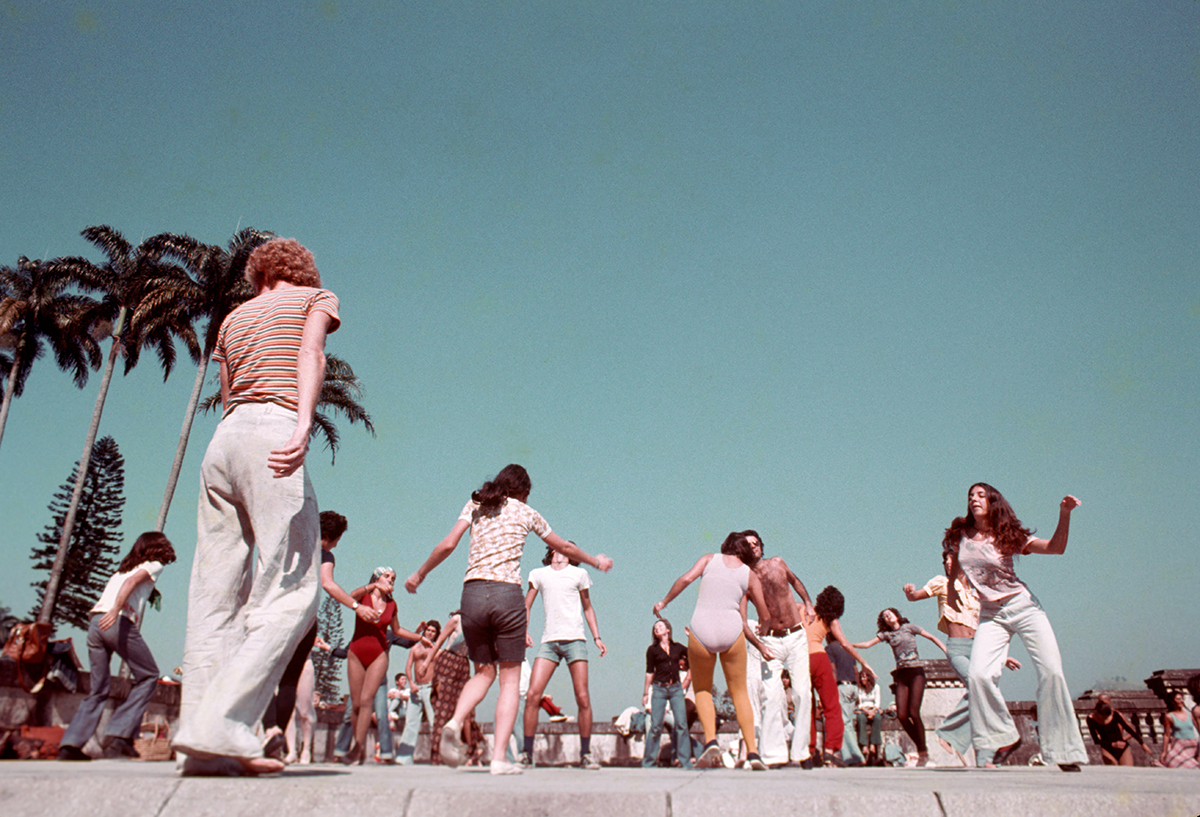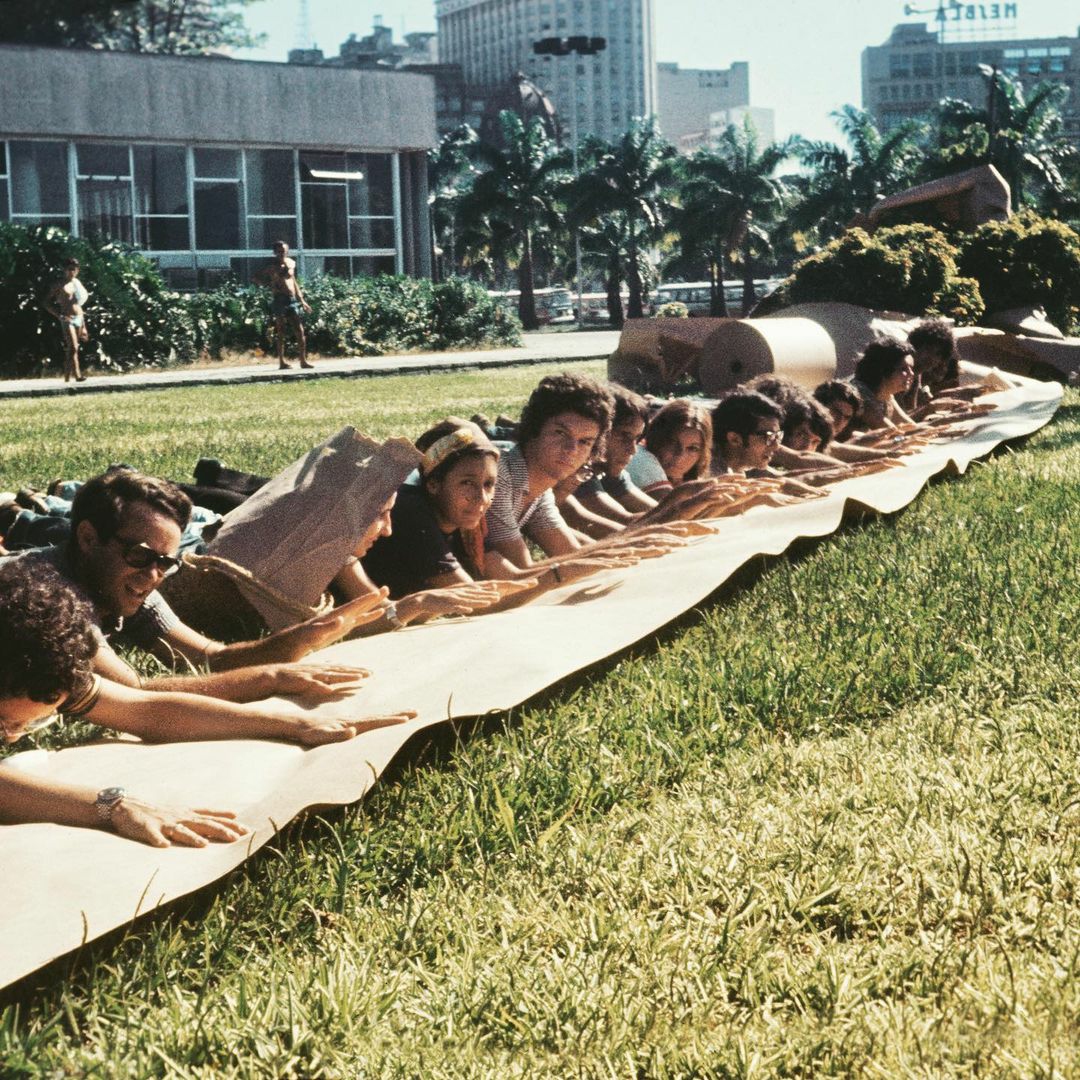Know-How-to-Live in the Ruins
08/26/2022
Leia este artigo em português aqui.
It was not a matter of aestheticizing the ruin or regeneration through certain cultural humanism, but rather a form of resistance that paid attention to the life that grows in the interstices of places where destruction seems to be all there is (...)
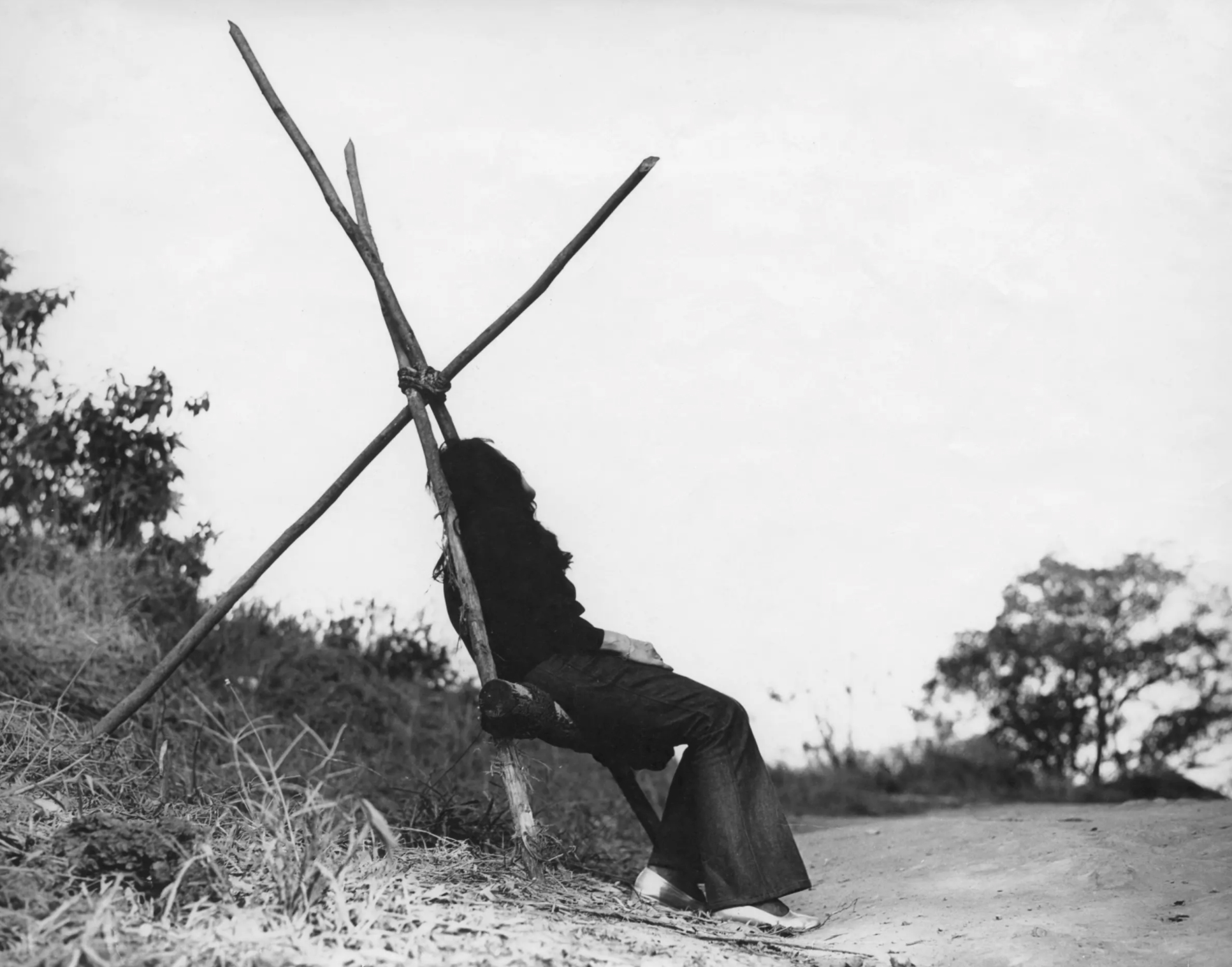
In the heart of São Paulo stands the "Central Park of the poor," as Lina Bo Bardi (1914-1992) called the Trianon or Tenente Siqueira Campos Park—a remaining of the big forest that the Tupi-Guarani called "caaguaçu," redesigned by the French landscaper Jacques Villon at the end of the 19th century to heal the overwrought or decadent city deweller with a prophylactic dose of nature.1 Near the gate of the Park, there is a statue of the bandeirante Anhanguera (1672-1740), the "old devil" who threatened the natives with fire to find minerals in mid-western Brazil. Anhanguera is erected heroically with his back to the forest, facing the monumental building of the Museu de Arte de São Paulo (MASP) across Paulista Avenue.
The MASP has existed since 1947, but the building, designed by Lina, was built between 1957 and 1968 on the same site where the Belvedere Trianon (1916-1951)—a leisure space for the coffee aristocracy that founded the avenue—and later, the I Bienal de São Paulo (1951)—a showcase for the industrial and business elite inspired in Venice’s international exhibitions—had been installed.
At MASP, Lina and her husband Pietro Maria Bardi (1900-1999)—invited by the communications tycoon Assis Chateaubriand to found and direct the Museum, where he remained until the end of his life—were able to restart their journeys, away from the fascist vestige and the ruins produced by World War II. For Lina and Pietro, MASP was the place to undertake the regeneration of the war and, for Chateaubriand and the other Brazilian elites who aspired to the European or North American lifestyle, the colonial and dictatorial past. Leaving behind "the rubble of an unparalleled barbaric butchery,"2 the Bardi couple arrived in Brazil with an exhibition of antique Italian paintings and decided to stay in the country with the mission of didactically instructing the "neither intellectual nor prepared" mass of "countries of initial culture, devoid of a past."3
󠄀If regeneration as omission and denial was part of the discourse on the social and educational function of MASP in its origins, aligned with the progressive and internationalist ideology of the time, our anti-heroine Lina Bo was to give other contours to modernity and its social institutions. Lina would develop a practice that finds joyful ways of knowing-how-to-live amid various anthropogenic ruins, whether they be the consequences of war, fascism, colonialism, slavery, indifference, or accelerated industrialization.
Art and Education as Regeneration
Early documents and texts about MASP highlight its educational vocation, deployed in a series of activities, most of which directly involved the Bardi couple. While the "didactic exhibitions" brought together in diagrammed panels photographs, reproductions of works, and documents that narrated the history of art across different countries and periods. The "Vitrine das formas" [Showcase of Forms] functioned as a sort of cabinet of curiosities that, avoiding categories and chronologies, exhibited diverse inventions of humankind, such as modern and classical sculptures, archeological artifacts, industrial products, etc.
Similar articulations of material productions were made in the issue of Habitat magazine (1950-1965), with a special focus on introducing the new urban bourgeoisie to the modern vocabulary, mingling it with "vernacular," "folkloric," "popular," or "primitive" art—terms of the time—from an aesthetic and ethnographic perspective. However, this perspective did not see the underlying violence in the national policies implemented in those years and disregarded the non-Western ontological particularities and their corresponding visual manifestations.4
The pedagogical initiatives of the early years of MASP were completed by the founding, in collaboration with Jacob Ruchti, of the Institute of Contemporary Art (IAC, 1951-1953). It was Brazil’s first design school and its curricular structure was directly influenced by the Bauhaus (1919-1933) and the schools established in its development outside Germany, such as Black Mountain College (1933) and the Chicago Institute of Design (1937).5 In the context of São Paulo's industrial growth and interest in participating in the international avant-garde, the principles of the Bauhaus, with its transcultural and cosmopolitan character, were a most radical reference in art, architecture, design, and education, as well as an opposition to retrograde conservatism (let us highlight that its school was closed due to Nazi pressure).
In Brazil, however, the Bauhaus legacy was retrieved with a technical and depoliticized bias by the celebration of Max Bill's presence in the country, who promoted the concrete movements.6 As Lina stated decades later: "Regeneration through art, the Bauhaus credo, turned out to be a mere utopia, a cultural mistake or a tranquilizer for the conscience of those who do not need it."7 It was only due to the various subversions of the Eurocentric forms and reciprocal learning with the inventive potential of other regimes of cultural production that the artistic practices in Brazil began to come close to a movement that favored experimental and libertarian education and creation.8 In Lina's practice, this happened most intensely and in a singular way during the five years she lived in northeastern Brazil, where she directed the Museu de Arte Moderna da Bahia (MAMB), in Salvador, between 1959 and 1963.
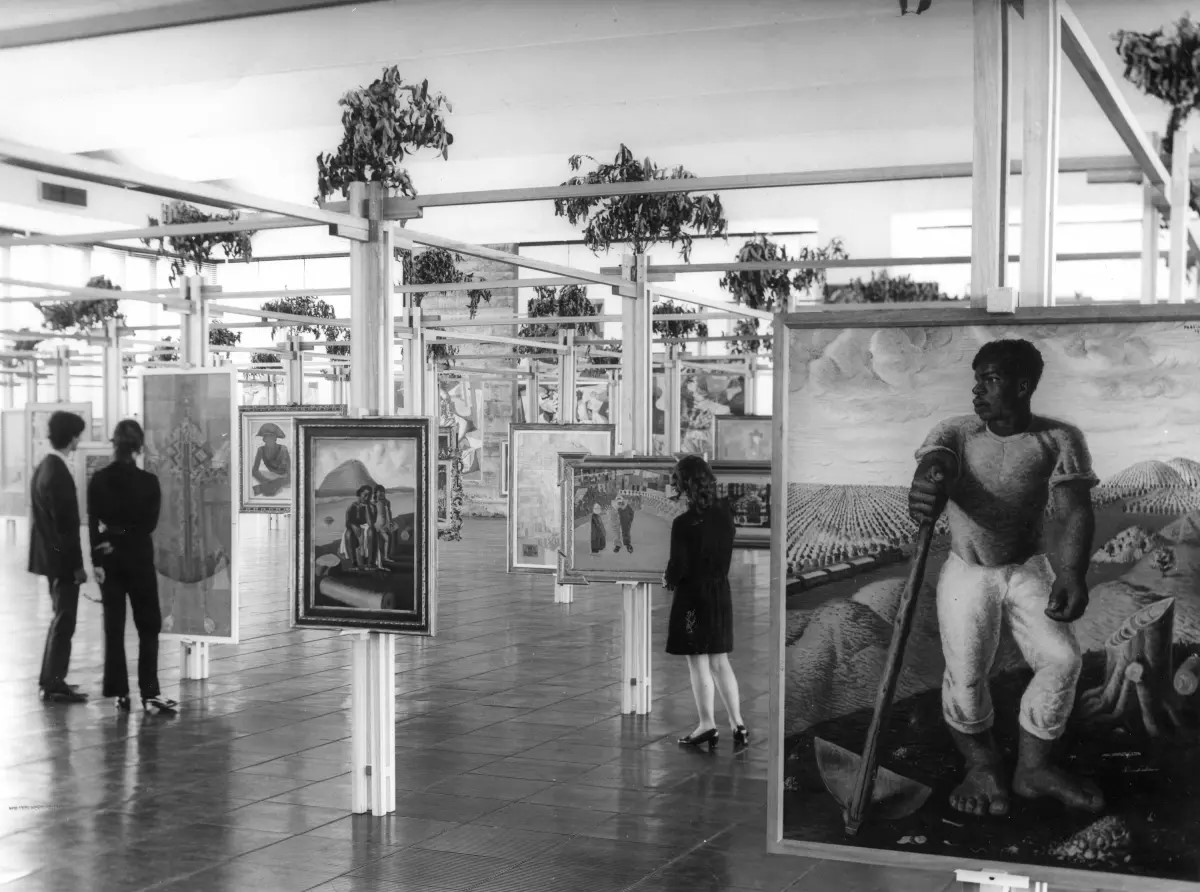
The Northeastern Civilization and Its Discontents
In Salvador, in the early 1960s, a movement of cultural effervescence opposed to the rest of the oligarchic-national structures of the city was articulated. This had been the first capital of Brazil and was seen as a colonial ruin, abandoned and backward, in contrast with the celebrated modernization of the southeast. It is there where Lina, in dialogue with the artistic and intellectual left, becomes a beatnik and another, getting closer to one non-white among whites,9 radicalizing her conceptions of the museum and the school. Her critique of the museum as an "intellectual mausoleum"10 that preserves a remote past under a linear chronology generates new wordings for the MAMB: "center, movement, school."11 Or, simply, instead of the "museum-museum," a "school-museum."
Recapturing Lina's curatorial and pedagogical actions in Salvador, Marcelo Rezende suggests that they reverberated with the ideas of educator Anísio Teixeira (1900-1971), who, in the early 1950s, developed in the same city an alternative to the traditional school (the "school-school"). Teixeira, who had been exposed to the principles of democratic education and John Dewey’s (1859-1952) school-community model, then created the "school-park": an institution of integrated education, based on work as a sensitive knowledge through craftsmanship—something "absurd in the context of industrial development of those years."12
In a similar comparison, Olivia Oliveira brings Lina closer to Paulo Freire (1921-1997). While the director thought in terms of an "anti-museum," the educator outlined proposals for an "anti-school" through his literacy method, which began with the Movimento de Cultura Popular [Popular Culture Movement] in Recife, in the early 1960s. Both positioned themselves against the processes of domination and in favor of emancipatory freedom, which was to be effected through active and collective participation.13 While Freire opposed the banking model of education, in which students are seen as empty recipients to be filled with a teacher's knowledge, Lina would reject the idea of the "public"—either as an "uninformed" mass "devoid of a past," or as an elite "up-to-date with the events of the art world"—and would speak of "people."14 She will also rethink the word "conservation" as a policy to preserve white-universal subjectivity, replacing it with "documentation" as an expression linked to the idea of a dense "historical present" that aims to keep cultural activity alive and in constant movement. Thus, inventive action in the world would be recorded as creative and polyphonic testimonies that would be available for use by any individual. In the school-museum, there is no need for paternalistic, remedial, and vertical education: all knowledge is common property belonging to a collectively formed heritage, made by and for the people.
As part of the existing Museu de Arte Moderna, Lina's school-museum project included a Centro de Documentação do Artesanato Popular do Nordeste [Documentation Center for Northeast Popular Handicrafts], a Museu de Arte Popular [Museum of Popular Art], and a Escola de Desenho Industrial e Artesanato [School of Industrial Design and Handicrafts] that would bring together designers and master craftsmen, so that the foundations for modern design would be determined by the subsistence technologies of local communities. All of these institutions were to be based at the Solar do Unhão, a 16th-century mansion that Lina herself restored but enjoyed little. For most of her time in Salvador, the MAMB functioned in the rubbles of the Castro Alves Theater, which had been burned down on the eve of its inauguration, in 1958. On the stage half destroyed by fire, Lina and theater director Martin Gonçalves mounted plays by Brecht and Camus. It was not a matter of aestheticizing the ruin or regeneration through certain cultural humanism, but rather a form of resistance that paid attention to the life that grows in the interstices of places where destruction seems to be all there is.
Completed in March 1963, the Solar do Unhão held the exhibition Nordeste [Northeastern], also known as Civilização do Nordeste [Northeastern Civilization] in November of the same year. The exhibition featured artists from the region who used "garbage" as raw material: "burnt lamps, fabric clippings, lubricant cans, old boxes, and newspapers." The idea of "civilization" was used as a "practical aspect of culture,"15 not separate from life. "This exhibition is an accusation (...) not humble, that opposes the degrading conditions imposed by men, a desperate effort for culture," exclaimed the introductory text. A few months later, the military of the 1964 coup occupied the Solar with troops and cannons. Lina lost the direction of the Museum and returned to São Paulo to finish building MASP. Freire went into exile in Chile, where he concluded his famous book Education, the Practice of Freedom. Anísio Teixeira, removed from the rectorship of the University of Brasilia, was found dead in 1971 in an elevator shaft—an emblem of verticality.
Cohabiting the Museum
Back to the construction site where MASP was to be installed on Paulista Avenue, having been transformed by her experience in Bahia,16 Lina provokes São Paulo’s elite by imagining a building in the center of the city that was to be, although monumental, "ugly" and "poor."17 Lina rejected the battle against the decadence that could threaten the progressive ideals of the elites to praise the ruin instead, assuming an upstart nature, not at all hygienic for the parameters of Western civilization.
Dreaming like a woman,18 between 1963 and 1965, Lina made a series of drawings and studies in which the future MASP appears covered with mosses and epiphytic plants that bend and mingle with the construction. This non-parasitic vegetation would cohabit the building with works from the collection, which, therefore, would not be preserved from the effects of time but rather be treated as beings that live and die. Also noteworthy is the design where the green areas of the Trianon Park extend into the Museum. The architect undoes the Park's enclosure, which she mocks by calling it the "Central Park of the poor"—that is, a residue of nature even more miserable than that of New York's Central Park—in order to give back some non-human manifestation to the political sphere. Vegetation ceases to be a mere landscape and goes on to be in the very same place as culture. In other words, the division between nature and culture on which the Western worldview was founded dissolves. Hybrid existences abound in the drawings, such as the spiraling "flower-staircase” that Lina sketches as a connecting element between the internal and external spaces of the MASP.


Off paper, the "flower-staircase” project was replaced by a "staircase-tribune."19 The plants remain separated by the fences of the Trianon Park. Still, other forms of mutual coexistence are at work through the architecture of the MASP in its current configuration. The spontaneous dynamics that occur in the suspended space beneath the building, in the Vão Livre [Free Span], generate new ways of imagining worlds and learning collectively. In the picture gallery, the works from the collection are presented on glass easels: the "forest" created by Lina for the exhibition space that, devoid of walls or divisions, encourages visitors to wander freely, tracing each their own path and experiencing points of view that escape the linearity of perspective and time invented by modernity. In the end, "(...) time is not linear, it is a marvelous tangle in which, at any given moment, points can be chosen and solutions invented, without beginning or end."20
From an ethical, rather than a technocratic perspective, Lina emphasized affections and vital needs instead of predetermined and fixed forms. Her drawings, photographs, writings, and project documents emanate an unusual joy. Populated with colors, figures, details, beings, stories, and elements from diverse visual cultures, these projects inspire actions committed to existence in its multiplicity. There are several possibilities for future in her creations for scenographies, museums, homes, objects, furniture, urban spaces, etc. What draws up what we could call a ‘pedagogy’ in Lina is precisely the correspondence to a know-how that activates the life force that vibrates in the body of whoever comes into contact with her work: know-how-to-do, know-how-to-live, mobilizing know-how, driving know-how, practical know-how, autonomous know-how, native know-how, the know-how of difference, know-how to savor, ancestral know-how, immanent know-how, etc. Knowledge is the result of free and intense relationships expressed through "subtle substances" arranged as a "marvelous tangle": "tree-columns, flower-staircases, wave-weavings, tree-weavings, waterfall-staircases, waterfall-carousels, carousel-waterfalls, stone-rivers, stone-leaves, leave-walls, wall-shrines, shrine-triangles, spiral-pyramids, column-spirals, stairs-spirals, stairs-weavings, shrine-weavings, temple-trees, temple-rocks , rocks-weavings, etc."21
Lina, Becoming a Fossil
One of Lina's last projects, presented in 1991, a few months before her death, was the competition for the Brazilian Pavilion at the Universal Exposition in Seville, for the celebration of the 500th anniversary of Christopher Columbus' arrival in America. The project was not carried out, but there is the humorous account of her assistant, Marcelo Suzuki, about the process:
«[Archaeologist] Niède Guidon came to see Lina and explained that in São Raimundo Nonato, in Piauí, she had discovered a couple of humans dating back to approximately 10,000 years; perhaps the oldest human remains in the Americas. To which Lina replied, "Can I borrow that man? The skeleton, huh?" With Niède's yes, Lina was thrilled and we got down to work. She "dictated": "Let's make a big, closed box. Enclosed in Brazilian marble, all white, shining under the sun of Seville. A coffin for the Man of the Americas. Let's show the Europeans... they came here destroying everything, killing everyone, they'll see: we were here a longer time ago." Lina included herself. And she went on outlining the program: a restaurant on the first floor with a menu of indigenous food, Brazilian food previously discovered. In the theater—the first floor—shows like the ritual of the Pankararu Indians, etc.»22
Like the European conquistadors, Lina arrived in South America by ship across the Atlantic. Upon landing in Rio de Janeiro in 1946, she was mesmerized by the Palácio Capanema, a landmark of modern Brazilian architecture, glimpsing at a new territory. The first text published by Lina in Brazil, entitled "Na Europa a casa do homem ruiu" [In Europe the House of Man Collapsed], criticizes the bourgeois and narcissistic way of inhabiting the house—and, in short, the world—that leads to its destruction: "Yes, we did not think houses were so fragile, so subtle, so 'human,' nor that they could die like that."23 Unlike the attitude of the colonizers, who "came here destroying everything, killing everyone," what moved her practice was not a narcissistic desire based on mechanisms of differentiation, hierarchization, and categorization. Her loving approach to those who were "here a longer time ago," to the point of feeling part of them, stimulated fruitful encounters, dissolving relations of domination.
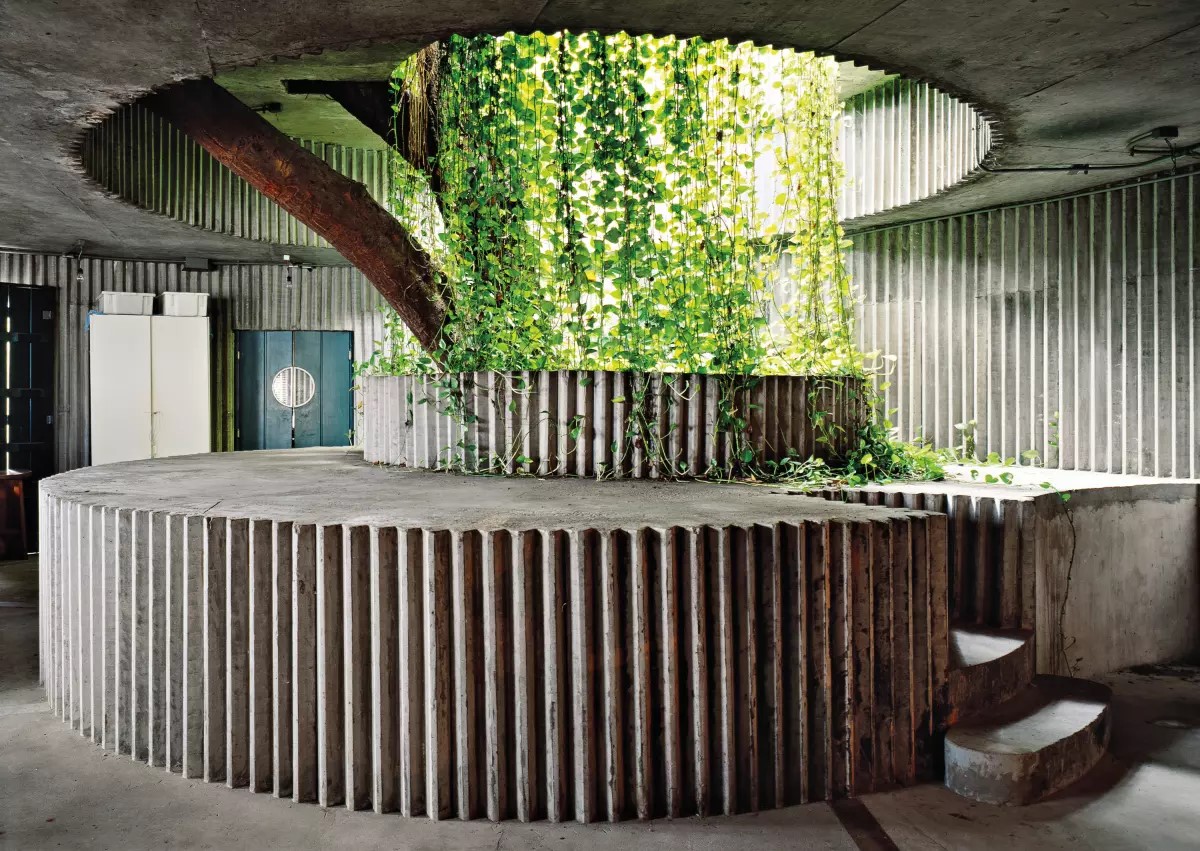

Like Niède Guidon—whose archaeological excavations transformed the knowledge of human settlements in the Americas—Lina identified where and how life can manifest. To display the skeleton found in Piauí—one of the oldest memories of human presence on Earth—in contrast with the progressive and industrial character of the Universal Exposition, confronts not only the historical narrative of the "discovery" and previous scientific perspectives but also the capitalist production system that ravages various forms of life on the planet, such as that of the indigenous peoples. To activate ancestral existences with situations that traverse the body in the present—whether through architecture, food or dance—is to advocate for multiplicity and difference.
Let us also remember the logo that Lina developed for Sesc Pompeia (1982), created from the ruins of a drum factory in one of São Paulo’s oldest industrial parks. In the logo, the factory's chimney tower emits flowers instead of smoke with its pollutants. Also at Sesc Pompeia, the railing of the walkways between the service towers has the shape of a mandacaru flower, a symbol of resistance in Brazil's drought polygon. Like this flower, which is reborn in the dryness of the northern region, in Lina, resistance is beauty, creation, and care, even where conditions are the most adverse. Lina never worked from melancholy or suffering, nor did she cynically dramatize poverty or scarcity. On the contrary, she mobilized processes of recognition, elaboration, and reinvention of defeats, failures or decadence.
Ruins are everywhere. Brazil has produced many of them since its founding. At the age of 88, Niéde Guidon fears the abandonment of the Museu do Homem Americano [American Man Museum] and the Museu da Natureza [Nature Museum], created by her in Piauí. The Cinemateca Brasileira [Brazilian Cinematheque, in São Paulo] and the Museu Nacional [National Museum, in Rio de Janeiro] burned down in 2018 and 2021, respectively, losing an important part of their collections. On an August afternoon in 2019, the sky of Paulista Avenue darkened with smoke from the forest fires that occurred in the country’s central region. Faced with images of the scorching flames, there were reactions of indignation permeated by feelings of helplessness or indifference. The statues remain intact. With his back to the forest, possessed by greed and virility, Anhanguera, the man who sets fire, turns towards the MASP.
